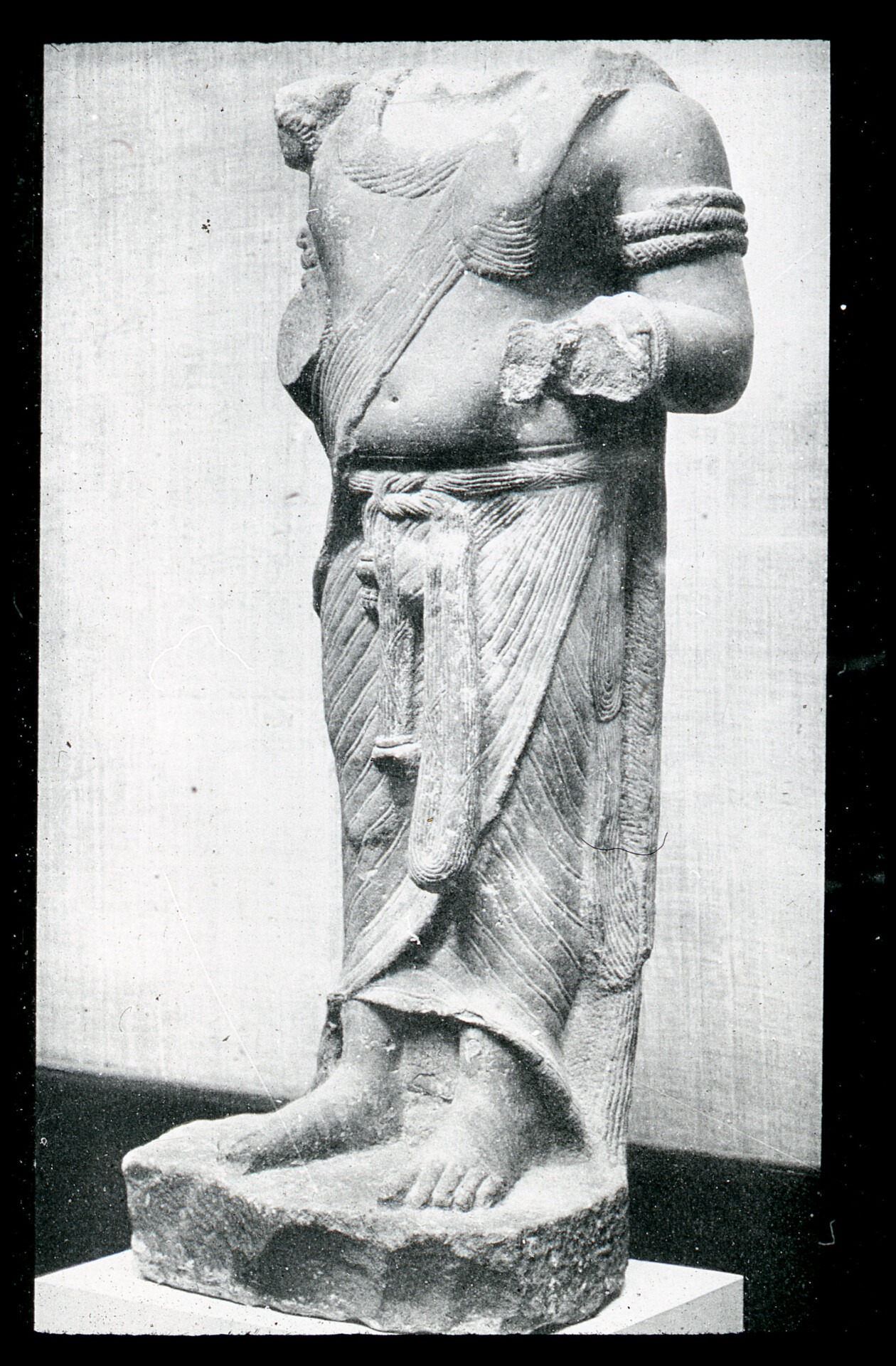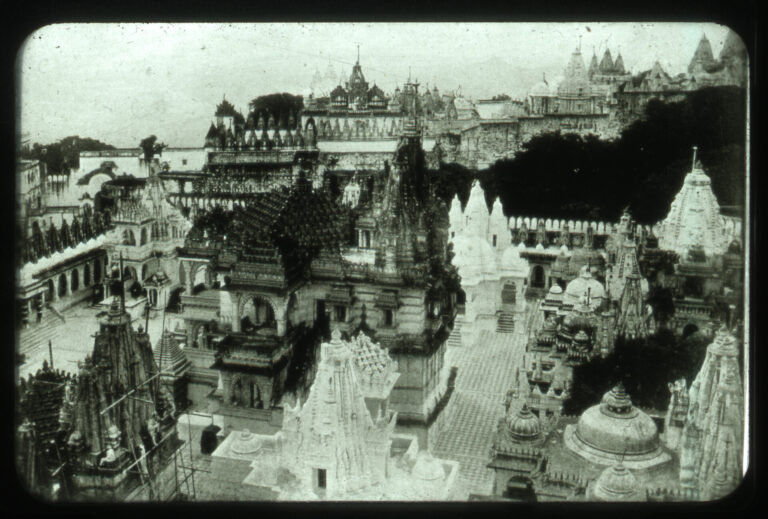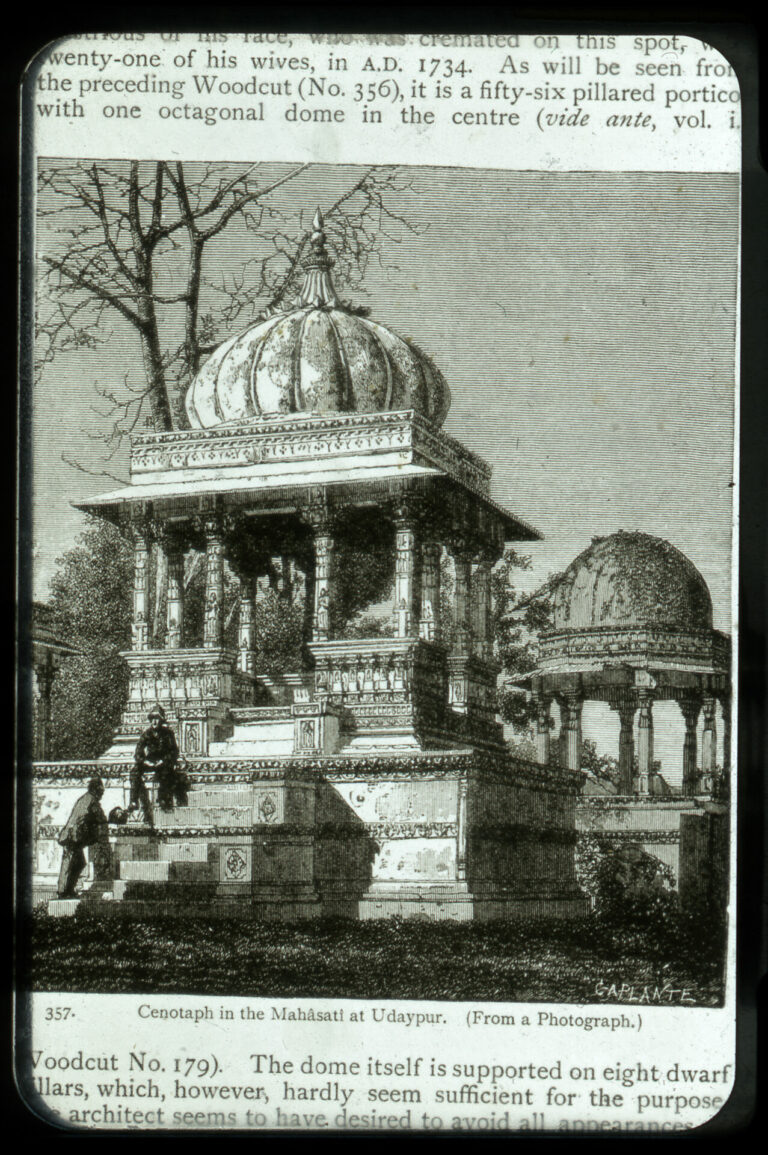I
Introduction
English-born and trained at the School of Oriental and African Studies (SOAS) at the University of London, Arthur Llewellyn Basham (1914-1986) contributed significantly to the foundation of modern Asian studies during his tenure as Foundation Professor of Oriental Civilisations at the Australian National University (ANU) between 1965-1980. His scholarly, archival, and pedagogical engagements point to the growing international consensus on the importance of studying the cultures of a recently decolonized Asia.[1] To this end, and as reflected in his encyclopaedic publication, The Wonder That Was India (1954), Basham pioneered the study of South Asian histories through the lens of visual cultures. Following his keen interest in the visual—between the 1960s-1980s—Basham amassed an archive of over 5,000 35-mm slides to support his teaching of an Asian art history.
This essay asks if Basham’s digitized archive can serve as a useful site to delineate his contributions to the rapidly growing scholarly and pedagogical pursuit of Asian art history? Can one read and annotate the digitized archive to delineate patterns which may have remained out of view from Basham’s physical cabinets? However, before we answer these questions, we need to situate Asian art history in a longer historical trajectory which pre-dates the decade of the1950s and its decolonizing accent.
II
Conceiving an Asian Art History: The Colonial Period
It remains widely known that as part of a growing anti-colonial landscape, the conception of an Asian art and its interconnected histories began to take root from the 1890s. Relatedly, numerous projects emphasized the philosophical, spiritual, and aesthetic unity of Asia which not only upheld humanism but also served as a counterpoint to the superior, materialist, and violent tendencies of European colonization. Notable proponents and projects which committed to the notion of a united Asia were Rabindranath Tagore’s Sāntiniketan (founded in 1901), Abanindranath Tagore, Okakura Kakuzo, and Ernest Fenollosa’s artistic exchanges (between 1901-1904), and AK Coomaraswamy and E.B. Havell’s art historical publications (1903-1976), among others.[2]
As much as these ideologues, artists, and scholars attempted to resist, correct, and even efface colonial (mis)perceptions of Asian cultures, sometimes, they ended up propagating similar (colonialist) ideas, albeit in a neo-colonial framework; in other words, like their European counterparts, these actors too elevated select Asian peoples, places, and their civilizations as being superior, and hence dominant. Japan, China, and India typically emerged at the forefront of such place-based imaginations of hegemonic, fountainhead cultures and civilizations.
III
The Imagination of a Greater India within Asia
Within a larger place-based and culturally hierarchical landscape— which was at once anti-colonial and Asia-centric — India was presented as an ancient “mother culture” in order to advance the thesis of a Greater India from as early as 1910. Greater India was both an academic and a political concept which proposed a peaceful Indian colonizing migration to Southeast Asia thus resulting in the Indianization of Southeast Asian polities and cultures; in other words, India was seen as an origin culture, i.e., a giver of superior ideas, art, and architectural styles to all other Southeast Asian beneficiary cultures. In The Wonder that Was India, Basham subscribes to this view in the following words, “The whole of South-East Asia received most of its culture from India” . Basham’s imaginations were no different from those expressed in books and catalogues on the arts of South and Southeast Asia published steadily through the 1950s to the 1970s.
IV
Finding Greater India in Basham’s publication and cabinets
The overall structure and scope of The Wonder that Was India extends to Basham’s classification, organization, and annotation of the physical slides and their accompanying index cards in the following ways:
First, India’s long civilizational past replete with chronological structures and periodizations (based on regional and dynastic specificities) informs the publication and the archival cabinet.
Second, the classificatory schema (especially used to understand architectural paradigms) elevate India as a mother culture or “fountainhead” civilisation of Asia in the publication and archival cabinet.
Thus, it is not hard to see how the publication and the cabinet are steeped in the imagination of a Greater India, an idea that was by no means unique to Basham. On the contrary, and as mentioned earlier, a generation of scholars based their scholarship and pedagogies on the theory of Indianization; having said this, differences remained in the degree to which they submitted variously to a narrow view of Indian hegemony vis a vis a wider perspective on a united, interconnected Asia and its reciprocal exchanges which would have occurred on equal terms.
As an example, the Kolkata-based Greater India Society (1926–1958) and its flagship Journal, the Journal of the Greater India Society (1934–1958) articulated the thesis of a Greater India forcefully and in narrow, unequal terms. In his writings, the society’s leading scholar, R.C. Majumdar asserted a unidirectional Indian influence on Southeast Asia. On the other hand, Majumdar’s student H.B. Sarkar countered this Indianist perspective to approach South-Southeast Asian relationships in non-hierarchical terms.
Broadly speaking, Basham too acknowledged India’s multi-directional cultural exchanges, and yet placed her in a superior position vis a vis Southeast Asia. Basham’s contemporary Michael Sullivan who taught art history at the University of Malaya in Singapore and simultaneously served as curator at the University of Malaya Art Museum (1955-1960) mobilized the Greater India theory with moderation; his field-based archaeological engagements made him receptive to an intra-regional network of exchanges and reciprocities. Contrarily, Sullivan’s successor William Willets (1963-1972) tended to return to India as a “point of origin” in the study of (South and Southeast) Asian art, particularly, its formal and stylistic analysis. Thus, depending on one’s institutional, ideological, or even methodological affiliations, the imagination of a Greater India impinged in a greater or a lesser degree on the framing of an Asian art history across different locations and phases.
V
Reframing Asian Art History: The Post-colonial Period
If the early phase of the making of an Asian art History saw varied contributions in the form of theory, practice, and discourse from the likes of the Tagores, Okakura, and Coomaraswamy, so too, its second or later phase from the 1950s witnessed numerous actors and their interconnected engagements.
For example, in addition to their respective scholarly publications, candidates such as Sullivan and Willets focussed on the combined enterprise of collection-building, curating, and the teaching of Indian, Chinese, and Southeast Asian arts at the University of Malaya (1952-1972). Their predecessors and contemporaries such as William Cohn (1880-1961), Douglas Barrett (1917-1992) and James Harle (1920-2004) too promoted Asian art and its history at the Universities of Berlin, Oxford and the Ashmolean and the British Museum.
Where do we locate our protagonist, A.L. Basham in this rich landscape of the making of an Asian Art History which was occupied by a stellar cast of characters spread across university and museum locations? We return to ask if Basham’s digitized archive can serve as a useful site to delineate his contributions to the writing and teaching of the field? Can one read and annotate Basham’s digitized archive to delineate patterns which may have remained out of view from the physical cabinets?
VI
Reading Basham’s Digitized Archive
A pilot project has offered the opportunity to search, annotate, and reconfigure images and index cards from Basham’s digitized archive to uncover the following patterns:
Primary pattern
Basham’s archival images are procured from a combination of his own field-based photographic documentations and from secondary source materials, chiefly, art history publications by other scholars.
Reciprocally, Basham’s own field-based photographic documentations too feature in publications by other scholars.
Secondary patterns and contributions from Basham to Asian art history
Together, these field-based primary and secondary source images yield the following outcomes:
First, these images constitute a comprehensive collection for teaching South Asian art history;
Second, and true to the imagination of a Greater India, these wide-ranging images shape a chronologically layered archive of India’s long civilizational history covering the pre-historic, classical, and medieval periods;
Third, Basham devises an India-centred classificatory and taxonomical system to compare, especially South and Southeast Asian artistic and architectural styles, which in turn constitute a significant segment of Asian art history.
Secondary patterns and contributions beyond Basham
Based on their respective primary or field-based images, one can co-relate individual scholars with their primary areas of study, i.e., archaeological sites, monuments, or museum collections. For example, the Baroda Museum Collection is drawn into Basham’s archive via secondary images or book scans of Herman Goetz’s publication, India: Five Thousand Years of Indian Art, London, Methuen, 1959; evidently, Basham’s archive sheds light on Goetz’s long engagement with the Baroda Museum as it does on Stella Kramrisch, Pramod Chandra, and Benjamin Rowland’s links with specific cities and their museum collections. (See infographic)
Following from the above, one is compelled to think of the inclusions and omissions; for instance, without Goetz’s engagement would the Baroda Museum collection remain outside the purview of Basham’s archive and consequently outside the teaching of an Asian art history? Likewise, without the extensive corpus of secondary images from his contemporaries’ publications, Basham could not have told, nor taught India’s long civilizational discourse complete with its chronological layers. In reverse, Basham’s extensive field-based photographic documentations would have clearly augmented and diversified the selections of numerous other scholars and teachers who aspired to frame an Asian art history.



